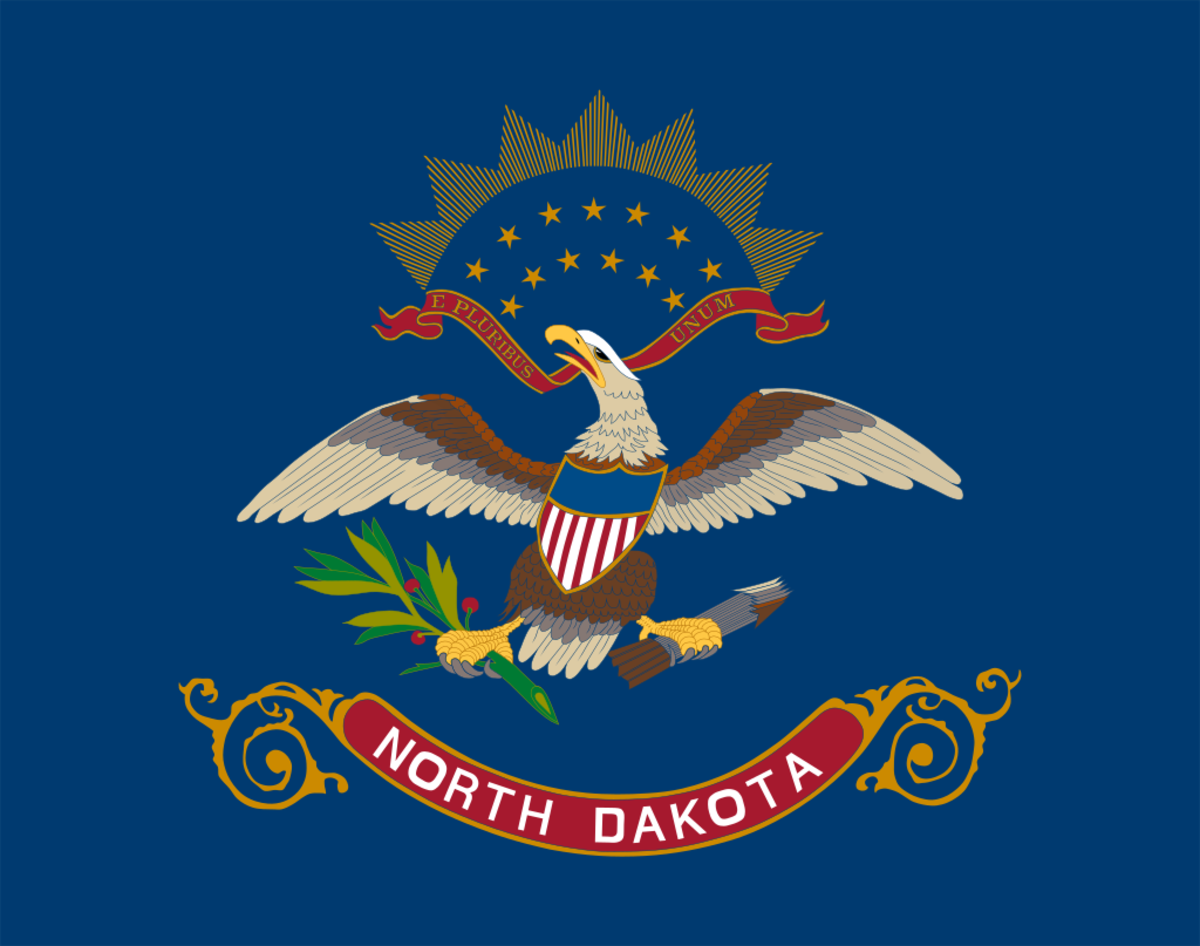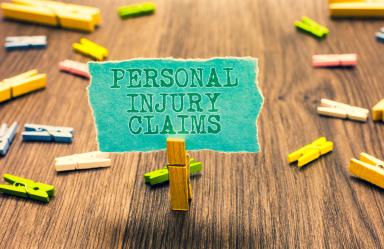North Dakota Personal Injury Laws

North Dakota sees its fair share of accidents. In 2021, more than 9,500 motor vehicle crashes occurred in the state, resulting in at least 3,900 injuries and over 100 deaths. A lot of these could have been preventable — many of those who passed away drove drunk or did not wear seatbelts. Another injury-related trend in the state involves incidents taking place on the job, with North Dakota ranking second nationwide in terms of workplace fatalities.
If you were injured or lost a loved one due to someone else’s negligence, you will likely need to work with a range of parties as part of the claims process. Some, like insurance companies, may offer a payment that does not adequately cover your accident-related expenses. As a result, filing a personal injury lawsuit is critical to obtaining the compensation you require. Navigating the legal system looks complicated, but know that others are in the same boat as you. Over 17,000 claims were filed in 2022 alone to recover workers’ compensation benefits.
This article can help you understand your rights in certain situations involving personal injury. It also aims to educate you on the state’s caps on damages and statutes of limitations. Moreover, it lists different resources that can guide you through the claims process.
North Dakota Laws Regarding Animal-related Accidents
Animal collisions in the state are not a rare occurrence. According to State Farm, North Dakota has placed ninth among the states where these instances are most likely. One of the ways drivers encounter these is by accidentally hitting animals that run at large off their grazing areas.
One possible reason is that over 1.9 million animals, like sheep, swine, bison, and cattle, reside in more than 18,000 ranches as well as farms across the state. Livestock farming has been an important sector contributing to the state’s economy. Accidents because of livestock are unfortunate, but damages may be recovered by an injured party in certain conditions.
Under state law, animal owners can face lawsuits if their livestock goes under, over, or through lawful fences. Meanwhile, owners of specific livestock, including stallions, boars, rams, and bulls, must keep their animals from running at large.
There is also the matter of grazing areas. Some of these fenced zones are located near public highways. In animal-related accidents, a claim against a livestock owner is possible. The damages a plaintiff can receive might be limited, though, if the animals in question were from a grazing area containing visible signs at least 200 feet from a highway’s entrance.
Domesticated animals are not the only cause of accidents in North Dakota. Some drivers, especially during November, might crash into wild deer. The state requires motorists to contact law enforcement if a deer-related collision results in an injury. However, if it only brings about property damage, there is no need to notify the police.
In cases involving wildlife-caused crashes, individuals possessing insurance policies with comprehensive coverage have the benefit of not worrying too much about repair costs. The add-on allows them to reimburse expenses related to their accident.
Laws About Truckers Remaining at the Accident Scene in North Dakota
The trucking industry in North Dakota is essential to keep its economy moving forward. At least 1 out of 11 workers in the state is part of the sector. These truckers haul various goods, including agricultural products like beef, sunflowers, and honey. They also move petroleum products.
Clearly, truckers play a pivotal role in North Dakota. However, it grapples with the significant number of fatalities from truck accidents. The state was listed by the Truck Safety Coalition as the ninth in the country with the most truck-related deaths, at 2.7 per 100,000 people.
A look into the 2021 report from the North Dakota Department of Transportation shows various trends. One is that a very high number of truck crashes — 69% — occur in rural areas. Another statistic is that accidents saw a decrease from 772 in 2020 to 734 in 2021. However, in the same period, incidents that involved injuries rose to 33%. Many of these happened during the winter period from October to March.
Part of the responsibility of truckers in vehicle crashes is staying at the scene. This duty is crucial in accidents that result in injury or death. They should also provide relevant information to the affected driver, including their name, address, and vehicle registration number. Another responsibility is rendering aid. A trucker involved in a crash must either carry or see to the carrying of an injured motorist to a hospital for treatment.
Failing to remain at the accident scene can have serious consequences for the trucker involved. For example, those who do not stay in a crash involving a seriously injured motorist can face a class C felony charge. Its penalties are fines of up to $10,000, a maximum of five years in prison, or both. In cases where the motorist dies, the trucker may be charged with a class A felony. Those convicted have to pay a maximum of $20,000 in fines or face 20 years in prison.
North Dakota Workers’ Compensation Laws in Death Cases
Pneumonitis is a disease characterized by lung inflammation. It is often acquired by people working on farms. People with jobs near areas like grain stores and hay bales are particularly at risk, especially if those places contain mold.
Based on federal data, the disease is the most over-indexed cause of death in North Dakota. To put it another way, cases of pneumonitis are higher in the state than in other parts of the country. These contribute to North Dakota’s rank as second nationwide among the states with the highest workplace-related fatalities.
In such cases, the surviving family members have a way to claim benefits through the North Dakota Workforce Safety & Insurance. This insurance state fund pays up to $10,000 for funeral expenses. If a deceased worker had a spouse with children, they could receive additional benefits. These can go up to 125% of North Dakota’s average weekly wage, two-thirds of the wages the deceased worker received per week, and as much as $15 per week, paid for every dependent child.
If the worker in question left behind neither a spouse nor dependent, then the state fund pays their surviving non-dependent children equally a lump sum worth $15,000. Surviving parents will be given death benefits if there are no non-dependent children. The next in line, if there are no parents, are the deceased’s brothers and sisters.
Medical Malpractice Laws in North Dakota
Poisoning is the second most common cause of preventable deaths in North Dakota. The National Safety Council reports that in 2021, 16.4 residents for every 100,000 people succumbed to poisoning. The overdose of opioid drugs drives a large proportion of these fatalities.
In some cases, the cause of this type of death is due to medical malpractice. There are many ways where healthcare providers can make an error with their patient’s medications. These include not properly educating them on their medicine or failing to prescribe the correct dosage.
Plaintiffs must know how to file medical malpractice claims to recover the appropriate amount of damages for their injuries. The knowledge is particularly essential in North Dakota since it saw the fewest payouts for medical malpractice in the country from 2012 to 2022; a total of $27.3 million were disbursed in the state during that period, which is significantly lower than South Dakota’s $435.69 million.
Those seeking damages from healthcare providers in North Dakota do not have to face a medical panel as part of the claims process. However, they do need to provide an affidavit within three months of filing a lawsuit against the defendant. The window can be extended if they can exhibit good cause to the court.
The affidavit to be submitted should contain a medical expert’s opinion that supports their claim. This documentation is important since it allows courts to prevent prolonged trials due to plaintiffs who cannot back up their malpractice claims.
Despite this, expert opinion is not required in specific cases. One example is when a physician unintentionally fails to remove a foreign substance — like surgical sponges — from their patient’s body.
North Dakota Laws about Dram Shop Liability
A significant portion of traffic accidents in North Dakota could have been avoided if the vehicle operators involved did not drink and drive; statistics from the state’s transportation agency show that around 30% of fatalities in 2021 were caused by drunk drivers.
In addition to pursuing legal action against the intoxicated drivers, plaintiffs can file claims against those who served or gave away alcohol to the liable party. One North Dakota municipality goes further and includes social hosts as part of those who can be held liable. The City of Grand Forks makes it unlawful for individuals to host an event where underage drinking might occur. The only exception is religious services. Those caught violating the city’s ordinance face at least $1,500 in fines.
However, as a defense, some businesses may state that they have implemented a program to train their servers on issues like underage drinking and drunk driving. In this case, the fact that they provided training cannot be used as evidence of their negligence. State law also limits the punitive damages victims can receive from liable businesses if they operate this type of program.
North Dakota Business Liability Insurance Requirements
Businesses must purchase workers’ compensation insurance from the state’s Workforce Safety & Insurance. The agency calculates a company’s premium based on various factors, including payroll and industry.
Businesses face additional insurance requirements if they operate motor vehicles. Under state law, automobiles must come insured, with coverage that meets the minimum standards:
$25,000 per person.
$50,000 per accident.
$25,000 per accident involving only property damage.
Vehicle policies should also have uninsured or underinsured motorist coverage. It must cover at least $25,000 per person and $50,000 per accident.
Another requirement is basic no-fault insurance, otherwise known as personal injury protection. This needs to cover no less than $30,000 of the plaintiff’s medical expenses, including costs related to prescriptions, surgical treatments, and ambulance rides. It allows policyholders to not rely on the liable party’s insurer to deal with economic losses.
Some vehicles require higher coverage limits, given their purpose. For instance, interstate trucks that weigh more than 10,001 pounds and haul oil need to be insured for at least $1 million. Other vehicles that carry substances like fertilizer should have minimum insurance coverage worth $5 million.
Is North Dakota a No-fault State?
Yes, North Dakota follows the no-fault system. This approach of obtaining compensation for accident-related expenses is especially applicable in motor vehicle crashes.
The state requires motorists to rely on their insurance company for accident-related injuries. It particularly mandates drivers to obtain basic no-fault insurance worth at least $30,000 to cover their medical expenses in case of a mishap.
Having a no-fault system does not mean those injured can no longer claim higher damages. North Dakota allows plaintiffs to file lawsuits in serious bodily injury cases. Under state law, injuries are considered serious if they lead to dismemberment, a disability that lasts for over 60 days, or death. If a victim’s medical expenses go over $2,500, then their injuries are also considered serious.
Is North Dakota a Modified Comparative Fault State?
Yes, North Dakota adheres to the modified comparative fault system. In other words, plaintiffs partly responsible for an accident can still recover damages from the defendants. However, if they are 50% or more at fault, then they cannot obtain compensation for their injuries. They may only receive damages if their degree of responsibility for the accident is 49% or less. The final award that plaintiffs can receive, though, decreases in proportion to their fault.
To demonstrate this, let’s say you were in an accident that caused $100,000 in damages, and the court has determined that you are 20% responsible. As such, $20,000 from your award will be deducted, and the final amount that you can recover is $80,000.
How Much Can Someone Sue for an Injury in North Dakota?
North Dakota does not typically impose caps on the compensatory damages plaintiffs can receive from defendants. Hence, it is very likely that victims will find no limits on the compensation they may obtain for costs like medical expenses and emotional distress.
Similarly, punitive damages — imposed on defendants to punish their behavior — are not usually capped in the state. Plaintiffs could receive such damages if defendants are guilty of acts considered malicious or fraudulent.
The state does maintain limits on damages in some instances. In successful medical malpractice lawsuits, plaintiffs may receive no more than $500,000 in damages.
Likewise, as of 2023, the award from tort claims against government entities should not exceed $406,250 per person and $1.625 million per accident. These amounts are adjusted annually.
The Statute of Limitations in North Dakota
North Dakota provides six years for plaintiffs to seek damages from defendants, with the clock beginning on the day of the accident. The six-year window may not apply in other types of cases. For example, if the victim dies, their legal representatives or surviving family members have only two years from the date of death to press claims against the liable parties.
The time limit for claims against negligent governmental entities is different as well. Under state law, plaintiffs must file legal action against liable parties within 180 days from the day of the accident. This time window is extended to a year if the case involves wrongful death.
Legal Resources for Injured Folks in North Dakota
North Dakota Department of Transportation
The agency, which has been operating since 1917, builds and maintains more than 4,800 bridges and over 8,500 miles of roads throughout the state. It also processes at least a million vehicle registrations every year. Another area that the agency oversees is crash reports, providing copies to those who have been involved in motor vehicle accidents. Motorists should note that crash reports can only be obtained if they were in an accident that resulted in injury or death or a minimum of $4,000 in property damage. They must at least provide information like their last name and the crash date to request a crash report. Individuals may access their reports online.
State Bar Association of North Dakota
The association has been working to promote the justice sector in North Dakota since its founding in 1899. Its members number over 3,100 individuals. One program that the association manages is its Client Protection Fund. It was made to build up the public’s confidence in the state's legal process and reimburse victims of dishonest lawyers. The association defines dishonest conduct in various ways, like embezzlement and theft of a client’s money. Another program that people can access to obtain support with their cases is the Lawyer Referral & Information Service. One may call 1-866-450-9579 to connect with the service, which operates Monday to Friday, between 9 a.m. and 12 noon, and from 1 p.m. to 4 p.m.
North Dakota Insurance Department
The department has been protecting consumers throughout the state and advocating for a competitive insurance market for more than 130 years. It maintains a website that allows North Dakotans to look up whether an agent or business possesses a license. The department also oversees complaints of insurance fraud. It has experience working on claims involving intentional attempts to stage incidents like theft or arson. It also deals with cases concerning false information on insurance policy applications. The department collaborates with organizations like law enforcement agencies and fire departments to investigate fraud cases. Individuals can submit a complaint through the Online Fraud Reporting System managed by the National Association of Insurance Commissioners.
Expertise.com StaffAuthor
Step into the world of Expertise.com, your go-to hub for credible insights. We don't take accuracy lightly around here. Our squad of expert reviewers, each a maestro in their field, has given the green light to every single article you'll find. From rigorous fact-checking to meticulous evaluations of service providers, we've got it all covered. So feel free to dive in and explore. The information you'll uncover has been stamped with the seal of approval by our top-notch experts.




